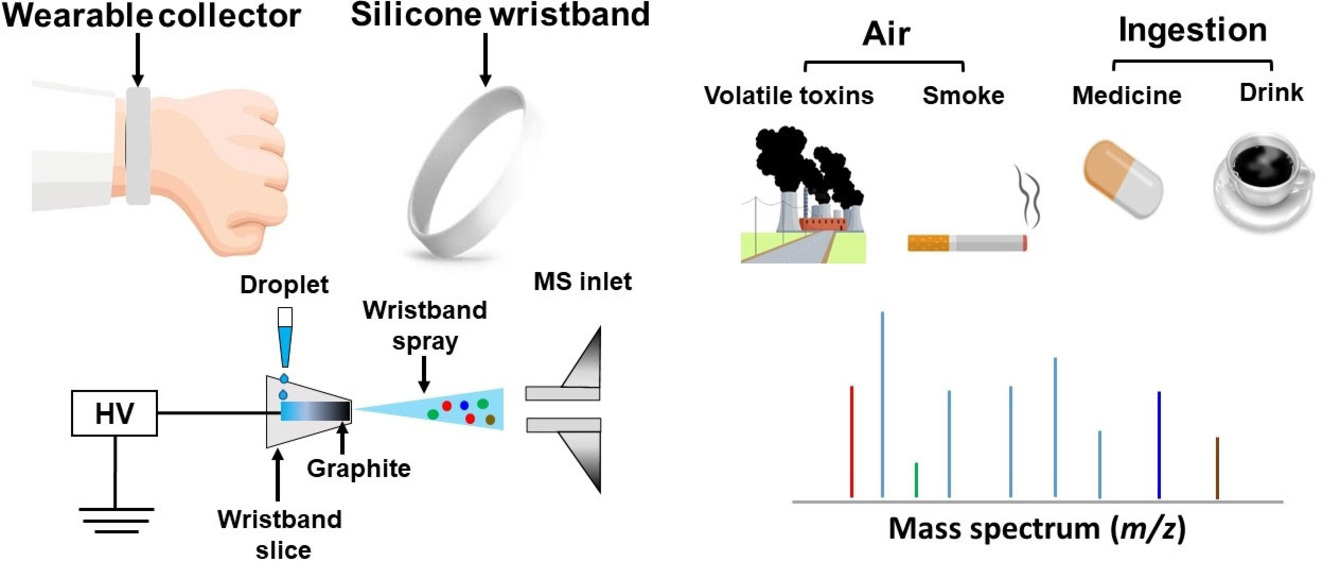Identifying safe levels of exposure and potential health hazards that can estimate an individual's exposure to contaminants are promising for a wide range of the detection of analytes in low levels of dermal and environmental exposures in sweat and environmental analysis. Wearing a silicone wristband exposes the internal surface of the wristband to metabolome (glucose, lipids, and metabolites) found in sweat and the external surface to exposome (occupational and environmental factors) that could impact health found in the air. This explores the combination of a simple collection and detection method, which can provide high sensitivity and selectivity, high resolution, and a long-time window for the simultaneous detection of ambient air and dermal sources. By coupling silicone wristbands (SWs) with silicone wristband electrospray ionization mass spectrometry (SWESI-MS), it may possible to develop personalized and noninvasive sampling tools that can gather extensive data on biochemical markers and outdoor air quality. We use SWESI-MS to monitor and quantify sweat-based and environmental chemicals at low levels of analytes. This enables us for the detection and identification of various species present from ingestion of drink, smoke, diet, drug, and air pollution exposure, such as caffeine, glucose, nicotine, reserpine, lactate, phosphocreatinine, oleic acid, and urea. Upon applying a voltage of 5 kV to create a spray, the signal generated by a triangular wristband surface remains steady for a duration of at least 2 minutes. There is a linear response observed from 10 pM to 100 μM. SWESI-MS technique presents several benefits such as in-situ sampling, absence of preprocessing, straightforward analysis, and automated search for high-dimensional data. Due to its simplicity, this method has the potential to facilitate the investigation of the human exposome concerning various chemical exposures in tens of thousands of individuals, with only a small sample volume.
Acknowledgement: This work was supported in part by the Air Force Office of Scientific Research through the Multidisciplinary University Research Initiative (MURI) program (AFOSRFA9550-21-1-0170).
This abstract includes a graphical abstract.


